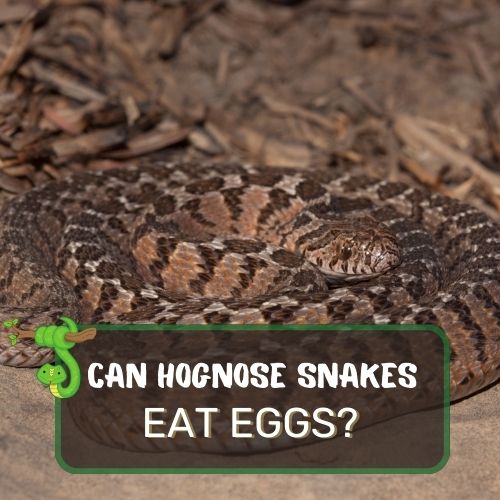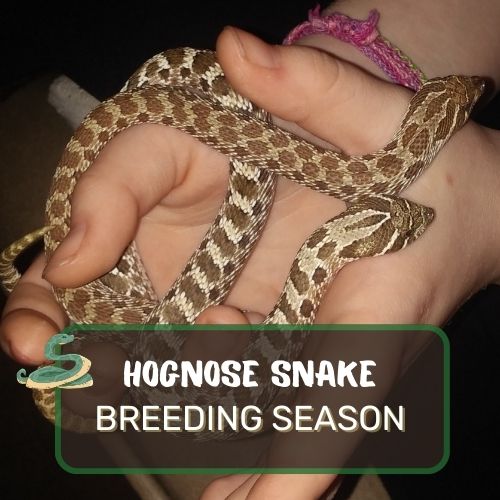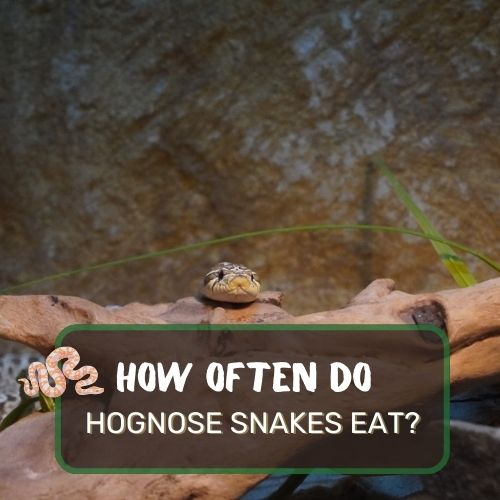
When it comes to the intriguing world of reptiles, one question that often slithers into the minds of enthusiasts is, “can hognose snakes eat eggs?”
It’s a question that delves deep into the dietary habits of these unique creatures. In this article, we’ll unravel the mystery behind the hognose snake’s diet, exploring everything from their natural feeding behaviors to the nutritional benefits of eggs.
We’ve sifted through various factors, including their anatomy, natural habitat, and expert opinions, to provide you with a comprehensive answer.
By the end of this read, you’ll not only have a clear understanding of what hognose snakes munch on but also gain insights into their captivating world.
Dive in and discover the fascinating world of hognose snakes and their relationship with eggs!
Table of Contents
- 1 Can Hognose Snakes Consume Eggs? Yes, they can
- 2 Dietary Preferences of Hognose Snakes
- 3 Hognose Snakes and Their Egg Eating Habits
- 4 The nutritional benefits of eggs for hognose snakes
- 5 The Anatomy of Feeding: How Hognose Snakes Consume Eggs
- 6 Risks and Considerations
- 7 Other Foods in the Hognose Diet
- 8 Conclusion
- 9 FAQ
Can Hognose Snakes Consume Eggs? Yes, they can
Hognose snakes are fascinating creatures with diverse dietary habits. In the wild, they often encounter various prey, including amphibians, insects, and small reptiles. Among these, eggs, especially those of toads and other reptiles, can be a part of their diet. Their specialized jaw structure allows them to consume eggs with relative ease. However, it’s essential to note that while they can eat eggs, it might not be a staple in their diet depending on their specific environment and availability of prey.
For those keeping hognose snakes in captivity, it’s crucial to ensure a balanced diet that mimics their natural feeding habits.

Dietary Preferences of Hognose Snakes
Hognose snakes, with their upturned snouts and charismatic personalities, have always been a subject of intrigue for reptile enthusiasts and researchers alike. But what really piques the curiosity of many is their dietary preferences.
So, let’s unravel the mystery of what these fascinating creatures munch on, shall we?
Overview of Their Diet
When you think of snakes, you might imagine them slithering stealthily, ready to strike at a passing rodent. However, hognose snakes dance to a slightly different tune. Their diet is as unique as their appearance.
In the wild, these snakes encounter a smorgasbord of potential meals, and they’re not shy about exploring their options.
Main Prey: Emphasis on Toads
Toads, oh toads! If hognose snakes had a favorite dish on their menu, toads would undoubtedly be the star.
These snakes have evolved specific adaptations, like enlarged rear teeth, to effectively prey on toads, which are known to inflate themselves as a defense mechanism. It’s like nature’s version of a food challenge, and hognose snakes are up for it!
Their ability to handle toads, which many other predators avoid due to their toxins, showcases the hognose snake’s unique dietary niche.
Inclusion of Mammals, Amphibians, Reptiles, and Eggs in Their Diet
While toads might be the main course, hognose snakes aren’t limited to a one-item menu. They’re opportunistic feeders, which means they’ll eat what’s available and what they can catch.
- Mammals: Occasionally, a small rodent might find itself on the wrong end of a hognose snake’s appetite. However, mammals aren’t the primary choice, given the snake’s specialized adaptations for other prey.
- Amphibians: Apart from toads, hognose snakes might snack on other amphibians. Frogs, with their soft bodies, can be an easier catch compared to the defensive toads.
- Reptiles: Lizards and smaller snakes might also fall victim to a hungry hognose. It’s a snake-eat-snake world out there, after all!
- Eggs: And now, the question on everyone’s mind: “Can hognose snakes eat eggs?” The answer is a resounding yes! Eggs, especially those of reptiles and amphibians, can be a nutritious treat. They offer proteins, fats, and a cocktail of vitamins and minerals. Think of them as the snake’s version of a protein shake. However, it’s essential to note that while eggs are on the menu, they’re more of an occasional treat than a staple.
Vognose snakes have a varied and intriguing diet. Their preference for toads showcases an evolutionary marvel, while their willingness to consume mammals, other reptiles, amphibians, and yes, eggs, highlights their adaptability.
For anyone lucky enough to observe or care for these snakes, understanding their dietary needs and preferences is key to ensuring their health and happiness.
Hognose Snakes and Their Egg Eating Habits

But beyond their unique appearance, it’s their dietary habits, especially their penchant for eggs, that has intrigued many. Let’s delve deeper into the egg-eating habits of these captivating reptiles.
How Often Do They Consume Eggs?
Hognose snakes are opportunistic feeders, meaning they’ll eat what’s available in their environment. While toads might be their primary choice, eggs are like the occasional delicacy they stumble upon.
In regions where eggs are more abundant, especially during specific breeding seasons, hognose snakes might indulge in them more frequently. However, it’s essential to understand that eggs aren’t their daily bread.
They’re more like the surprise dessert they get now and then. In captivity, the frequency can vary based on the owner’s feeding regimen, but it’s always good to mimic their natural diet as closely as possible.
Types of Eggs They Prefer
Now, here’s where it gets interesting. Not all eggs are created equal, at least not in the eyes of the hognose snake.
- Turtle Eggs: These are a top favorite. Turtle eggs, with their soft, leathery shells, are easier for hognose snakes to manage. Given the chance, a hognose snake might raid a turtle nest, feasting on the nutritious bounty within. The size of the egg and its nutritional content make it a worthwhile meal.
- Amphibian Eggs: While these are smaller and might not seem as filling as turtle eggs, they’re still on the menu. Amphibian eggs, especially those from frogs or toads, can be consumed, especially if they come across a cluster.
- Bird Eggs: This is rarer, but not entirely out of the question. If a hognose snake stumbles upon a ground-nesting bird’s nest with accessible eggs, it might take the opportunity. However, the harder shell of bird eggs can be a challenge.
- Reptile Eggs: Other reptiles, like lizards, also lay eggs with softer shells. These can be a treat for the hognose snake, especially if they’re found unprotected.
In essence, hognose snakes aren’t too picky when it comes to eggs. They’ll go for what’s available and what they can safely consume.
The soft-shelled eggs of turtles and other reptiles are particularly appealing due to their ease of consumption and rich nutritional content.
The nutritional benefits of eggs for hognose snakes

Eggs are nature’s little nutrient-packed wonders, and for hognose snakes, they can be a valuable source of sustenance. Firstly, eggs are rich in proteins, which are essential for the growth, repair, and overall health of these reptiles.
Proteins provide the necessary amino acids that play a crucial role in muscle development and the maintenance of healthy tissues.
- Proteins: Essential for growth, repair, and overall health. Provides necessary amino acids for muscle development and tissue maintenance.
- Fats (especially in the yolk): A concentrated energy source that ensures stamina and energy for daily activities, from hunting to shedding.
- Vitamins: Eggs contain vital vitamins like vitamin D. Vitamin D promotes calcium absorption, crucial for bone health.
- Minerals: Eggs are rich in minerals like phosphorus, zinc, and iron. These contribute to various physiological processes, from nerve function to blood clotting.
- Dietary Balance: While eggs are nutritionally beneficial, they shouldn’t be the sole diet. In the wild, hognose snakes have a varied diet; eggs are just one of many items they might consume. For captive snakes, it’s essential to replicate this dietary diversity for optimum health and longevity.
The Anatomy of Feeding: How Hognose Snakes Consume Eggs
Hognose snakes, with their peculiar dietary choices, have an equally intriguing method of consuming their meals, especially eggs.

The Unique Jaw Structure of Hognose Snakes
Hognose snakes are equipped with a jaw that’s nothing short of an engineering marvel. Unlike humans, their jaws aren’t fused at the front, allowing them to open their mouths incredibly wide.
This flexibility is further enhanced by their quadrate bone, which lets them stretch their mouths even wider. Imagine trying to eat a sandwich as big as your head; that’s what hognose snakes can do, thanks to their jaw!
Additionally, they possess rear fangs, which are more like enlarged teeth. While these are primarily used for subduing toads, their primary prey, they also aid in maneuvering and positioning eggs for consumption.
The Process of Consuming and Digesting an Egg
Once a hognose snake decides an egg is on the menu, the process is methodical. They’ll approach the egg, open their mouth wide, and start to swallow it whole. The egg travels down their esophagus, aided by muscular contractions.
Once inside the stomach, the strong gastric juices get to work. These juices dissolve the eggshell, allowing the nutrient-rich contents to be absorbed.
The indigestible parts, like the tougher bits of the shell, are later regurgitated or passed out.
Risks and Considerations
Feeding eggs to hognose snakes, especially in captivity, isn’t without its challenges. It’s essential to understand the potential risks and the importance of moderation.

Potential Risks of Feeding Eggs to Hognose Snakes
While eggs can be a nutritious treat, they’re not without risks. For starters, eggs that are too large can pose a choking hazard. There’s also the risk of bacterial infections if the eggs aren’t fresh or are contaminated.
Additionally, over-reliance on eggs can lead to nutritional imbalances. Eggs, while rich in certain nutrients, don’t provide everything a hognose snake needs for optimal health.
The Importance of Moderation and Monitoring
Like all good things, eggs should be given in moderation. For captive hognose snakes, it’s crucial to ensure a varied diet that mimics their natural feeding habits. This means eggs can be an occasional treat, not a staple.
Monitoring is also vital. After feeding an egg, keep an eye on the snake for any signs of distress or discomfort. Ensure the egg is appropriately sized and always prioritize the snake’s health and well-being.
Other Foods in the Hognose Diet

The hognose snake, with its charismatic demeanor and distinctive appearance, is a creature of varied tastes. While we’ve delved into their egg-eating habits, it’s essential to understand that their palate is much more diverse.
Let’s explore the other culinary delights that these snakes indulge in.
A Look at Insects, Amphibians, and Other Reptiles in Their Diet
- Insects: While not the primary choice, insects can occasionally find themselves on the hognose menu. Juvenile hognose snakes, in particular, might snack on soft-bodied insects as they provide an easily digestible source of protein. Think of it as their version of a quick snack!
- Amphibians: As we’ve established, toads are the hognose snake’s favorite dish. But their love for amphibians doesn’t stop there. Frogs, with their tender flesh, can also be a delightful meal. The hognose snake’s rear fangs come in handy here, helping them tackle these slippery creatures.
- Other Reptiles: The world of reptiles is vast, and the hognose snake isn’t averse to tasting its kin. Smaller lizards and even other snakes can become prey. It’s a testament to the hognose snake’s adaptability and opportunistic feeding habits.
Balancing the Diet for a Captive Hognose Snake
Caring for a captive hognose snake is a responsibility that requires knowledge and dedication. Their diet, in particular, needs careful attention.
- Variety is Key: Just as in the wild, captive hognose snakes thrive on a varied diet. This ensures they receive all the necessary nutrients and reduces the risk of dietary deficiencies.
- Quality Over Quantity: It’s essential to source high-quality food. Whether it’s insects, amphibians, or reptiles, ensure they’re free from pesticides and contaminants.
- Monitor and Adjust: Keep an eye on the snake’s health and behavior. If they’re refusing food or showing signs of distress, it might be time to reevaluate their diet. Consulting with a reptile veterinarian or expert can provide valuable insights.
- Hydration: Along with food, ensure the snake has access to fresh water. Proper hydration aids digestion and overall well-being.
Conclusion
You’ve journeyed through the captivating world of hognose snakes, unraveling the intricacies of their dietary habits. As you’ve discovered, these unique reptiles have a diverse palate, with toads being their primary choice.

However, their occasional indulgence in eggs showcases their adaptability and the richness of their diet.
From understanding their anatomy, which allows them to consume a variety of foods, to the importance of a balanced diet in captivity, you’ve gained a comprehensive insight into their feeding behaviors.
Remember, the natural world is filled with wonders, and the more we learn, the more we can appreciate its beauty and complexity.
Your curiosity and eagerness to understand these creatures play a vital role in promoting their conservation and well-being.
Keep seeking knowledge, and let your newfound understanding of hognose snakes be a testament to the endless marvels that nature holds. Stay curious, and let every discovery fuel your passion for the incredible world around us.
FAQ
Can Western hognose snakes eat eggs?
Yes, Western hognose snakes can eat eggs, especially those of reptiles and amphibians. While it’s not a staple in their diet, they might occasionally indulge in eggs if they come across them in the wild. In captivity, it’s essential to ensure the eggs are appropriately sized and fresh to avoid any health issues.
What can I feed my hognose snake?
Hognose snakes have a varied diet. In the wild, they primarily feed on toads. However, they can also eat insects, amphibians, smaller reptiles, and, occasionally, eggs. For captive hognose snakes, a balanced diet might include appropriately-sized rodents, amphibians, and the occasional egg as a treat. Always ensure the food is fresh and free from contaminants.
Can snakes eat raw chicken eggs?
While some snakes can eat raw chicken eggs, it’s essential to be cautious. Chicken eggs have a harder shell compared to reptile or amphibian eggs, which might pose a challenge. If you’re considering feeding chicken eggs to a captive snake, ensure they’re fresh and appropriately sized. It’s also a good idea to consult with a reptile expert or veterinarian.
Can a snake eat an egg whole?
Absolutely! Snakes, including hognose snakes, have a flexible jaw that allows them to swallow their food whole. When it comes to eggs, they’ll consume them in their entirety, digesting the nutritious contents and later regurgitating or excreting the indigestible parts.
How many chicken eggs can a snake eat in a day?
It depends on the snake’s size and species. Larger snakes might be able to consume one or two chicken eggs, while smaller species might struggle with even one. It’s essential to ensure the egg is appropriately sized for the snake. Overfeeding can lead to health issues, so moderation is key. If unsure, always consult with a reptile expert or veterinarian.




0 Comments